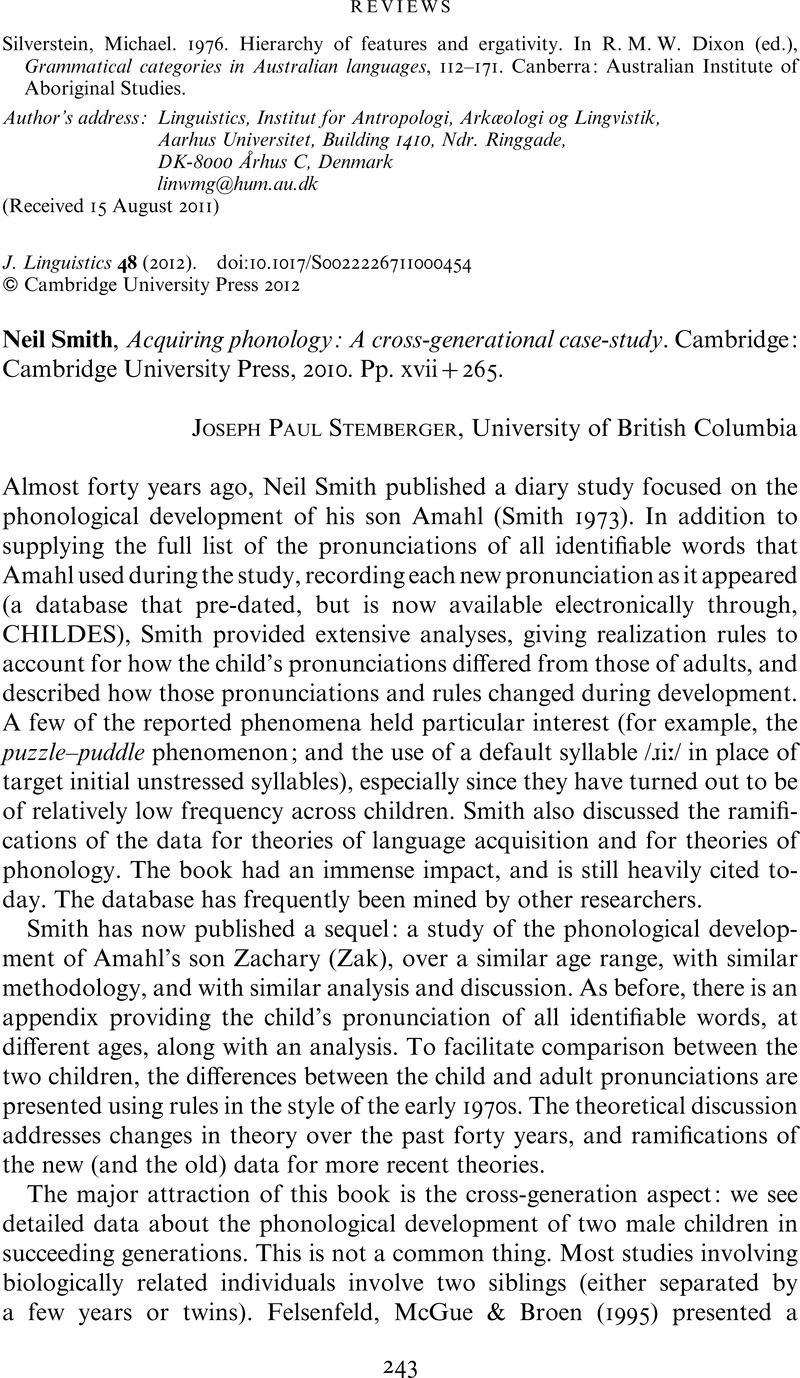No CrossRef data available.
Article contents
Neil Smith, Acquiring phonology: A cross-generational case-study. Cambridge: Cambridge University Press, 2010. Pp. xvii+265.
Published online by Cambridge University Press: 24 January 2012
Abstract
An abstract is not available for this content so a preview has been provided. Please use the Get access link above for information on how to access this content.

- Type
- Reviews
- Information
- Copyright
- Copyright © Cambridge University Press 2012
References
REFERENCES
Bernhardt, Barbara H. & Stemberger, Joseph Paul. 1998. Handbook of phonological development: From the perspective of constraint-based nonlinear phonology. San Diego, CA: Academic Press.Google Scholar
Dodd, Barbara & McEvoy, Sandra. 1994. Twin language or phonological disorder. Journal of Child Language 21.2, 273–289.CrossRefGoogle ScholarPubMed
Felsenfeld, Susan, McGue, Matt & Broen, Patricia A.. 1995. Familial aggregation of phonological disorders: Results from a 28-year follow-up. Journal of Speech and Hearing Research 38.5, 1091–1107.CrossRefGoogle ScholarPubMed
Gnanadesikan, Amalia E. 2004. Markedness and faithfulness constraints in child phonology. In Kager, René, Pater, Joe & Zonneveld, Wim (eds.), Constraints in phonological acquisition, 73–108. Cambridge: Cambridge University Press.CrossRefGoogle Scholar
Read, Charles. 1975. Children's categorization of speech sounds in English. Urbana, IL: National Council of Teachers of English.Google Scholar
Smith, Neil V. 1973. The acquisition of phonology: A case study. Cambridge: Cambridge University Press.Google Scholar




